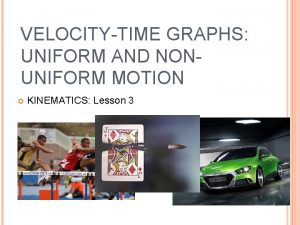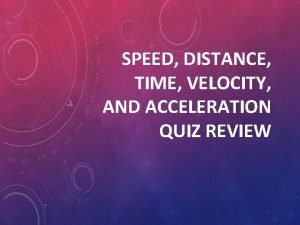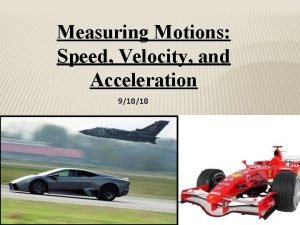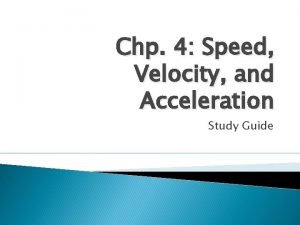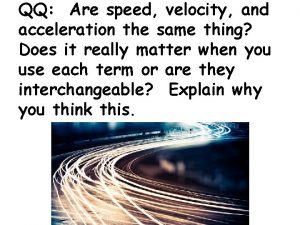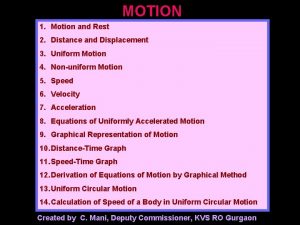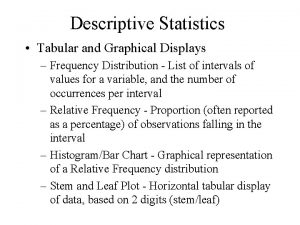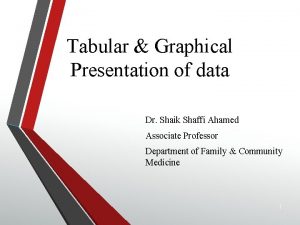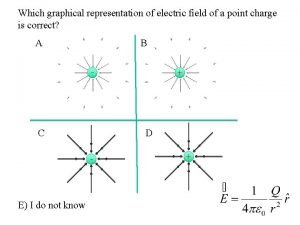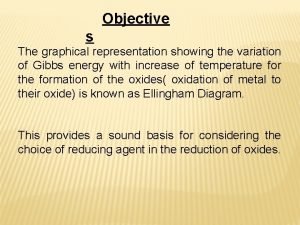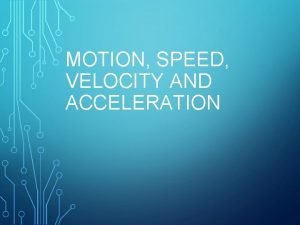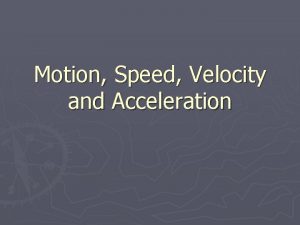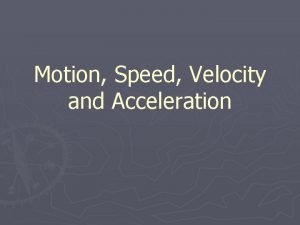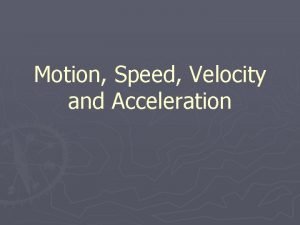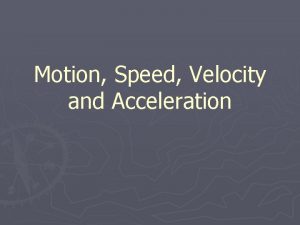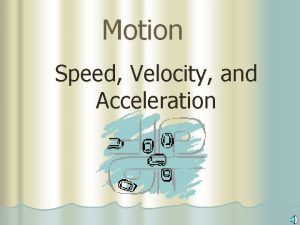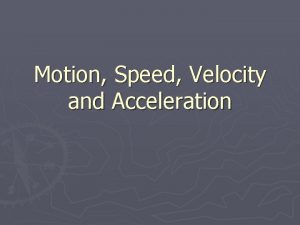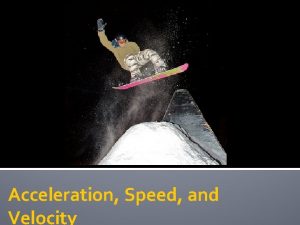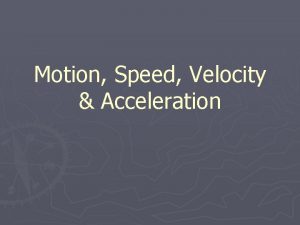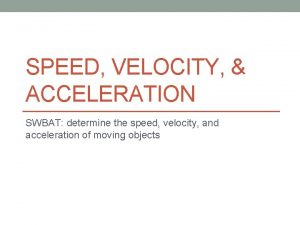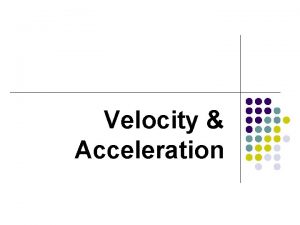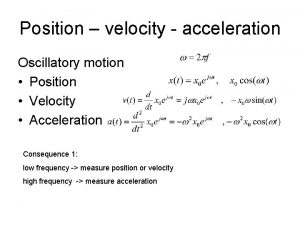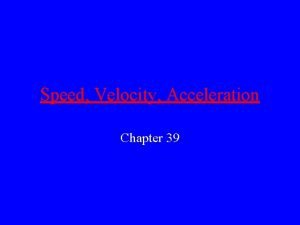Motion Speed and Velocity Acceleration Graphical Representation of


















- Slides: 18

Motion Speed and Velocity Acceleration Graphical Representation of Motion Uniformly Accelerated Motion Falling Bodies Momentum AS Physics

Describing Motion Time Interval – Time taken to travel a certain distance Distance – How far the object has traveled Displacement – Distance + direction – Final position – initial position 22

Describing Motion t=0 s x 1 =5 m 30 m t=3 s x 2 =35 m 3

Position-Time Graph 4

Speed and Velocity Average Speed – Total distance traveled divided by time taken Instantaneous Speed – Small distance traveled divided by small time taken Average Velocity – displacement divided by total time Instantaneous Velocity – Rate of change of displacement at an instant 5

Velocity on a Graph • Gradient of the secant line on an s-t graph èChange in position over time interval èAverage velocity 6

Velocity on a Graph 7

Velocity on a Graph • Gradient of a tangent on an s-t graph èChange in position over time interval (Δt 0) èInstantaneous velocity • Area under the graph èdisplacement 8

Example Find the average velocity of the car Calculate the instantaneous velocity at 0 s, 5 s and 25 s 99

Interpreting Graphs 1 10

Interpreting Graphs 2 11

Acceleration Rate of change of velocity – (Final velocity – initial velocity) divided by time Change in magnitude of velocity – Speeding up – Slowing down Change in direction of velocity Change in both magnitude and direction 12 12

Acceleration on Graphs • Gradient of a secant line on a v-t graph l Average acceleration • Gradient of a tangent line l Instantaneous acceleration 13 13

Interpreting Graphs 3 14

Uniformly Accelerated Motion Equations u = initial velocity v = final velocity a = constant acceleration t = time taken from start s = displacement 15 15

Uniformly Accelerated Motion • Examples èPage 42 • Car Stopping Distances èThinking distance § Car travels at constant speed èBraking Distance § Car decelerates èStopping Distance § Thinking Distance + Braking Distance èMake comparisons for initial speeds 20 and 40 metres per second (page 40) 16 16

Falling Bodies • Free Fall Constant downwards acceleration l Gravitational acceleration l 9. 81 ms-2 l Equations l • Air Resistance Proportional to surface area l Proportional to speed l Terminal velocity l Graph (page 45) l 17

Projectile Motion • Horizontal Motion Constant velocity l Equation l • Vertical Motion Free Fall l Constant acceleration l Acceleration due to gravity l Equations l • Examples 18
 Uniform speed graph
Uniform speed graph Acceleration quiz
Acceleration quiz Speed velocity and acceleration problems
Speed velocity and acceleration problems Speed, velocity and acceleration formula
Speed, velocity and acceleration formula Speed velocity and acceleration study guide answers
Speed velocity and acceleration study guide answers Speed velocity acceleration
Speed velocity acceleration Are speed and acceleration the same thing
Are speed and acceleration the same thing Speed, velocity and acceleration notes
Speed, velocity and acceleration notes Is v final velocity
Is v final velocity Speed unit
Speed unit S=ut + 1/2 at2
S=ut + 1/2 at2 Tabular and graphical representation of data
Tabular and graphical representation of data Tabular and graphical presentation of data
Tabular and graphical presentation of data Relation between angular and linear quantities
Relation between angular and linear quantities Angular acceleration and linear acceleration
Angular acceleration and linear acceleration Centripetal acceleration tangential acceleration
Centripetal acceleration tangential acceleration It provides a graphical representation of an electric field
It provides a graphical representation of an electric field Ellingham diagram normally consists of plots of
Ellingham diagram normally consists of plots of Hyteograph
Hyteograph
